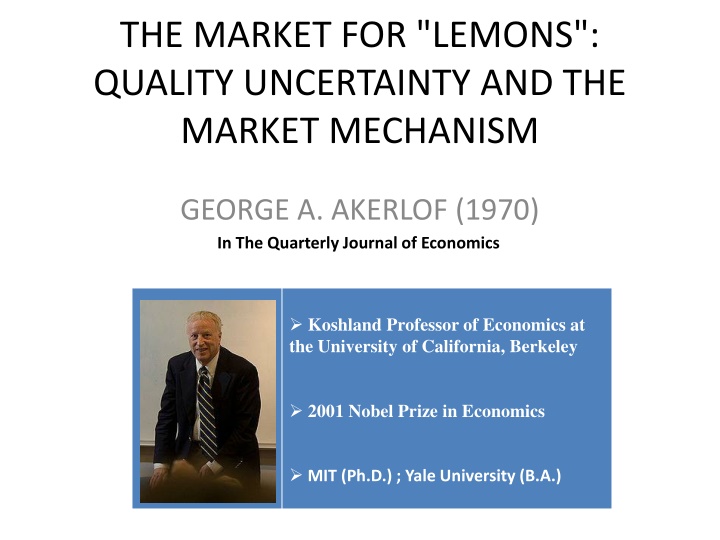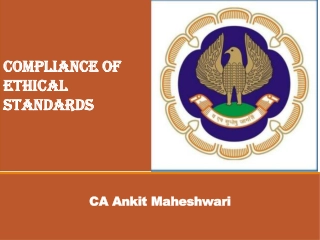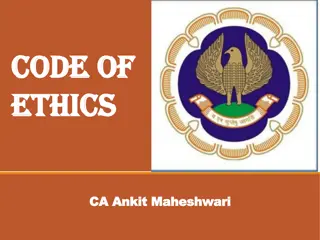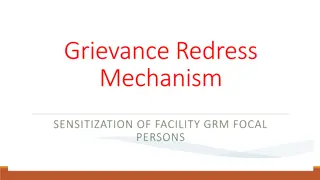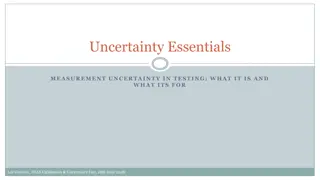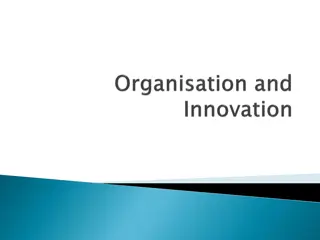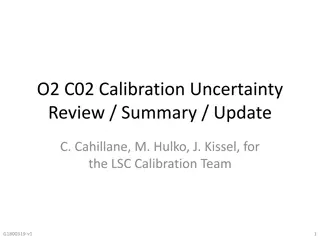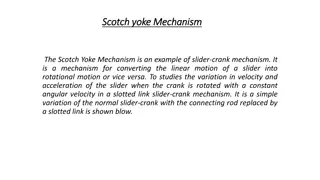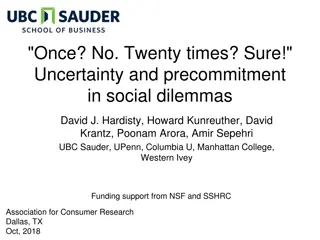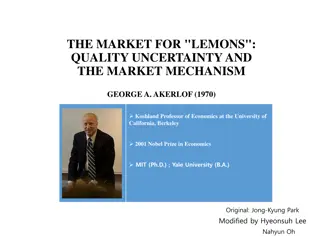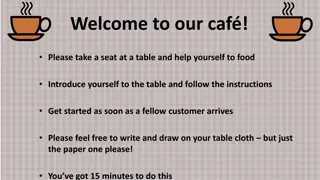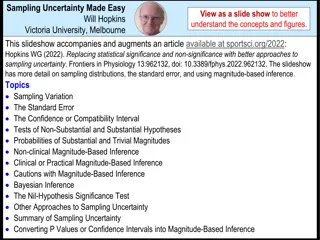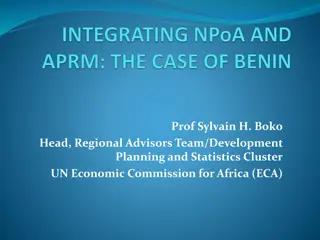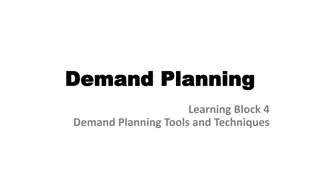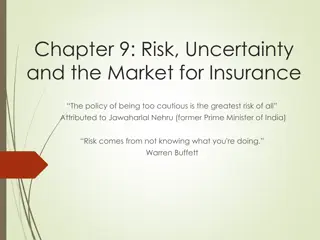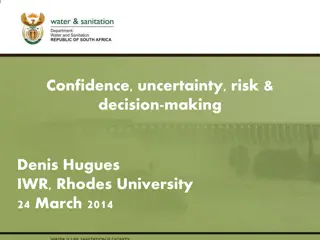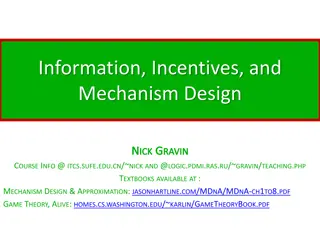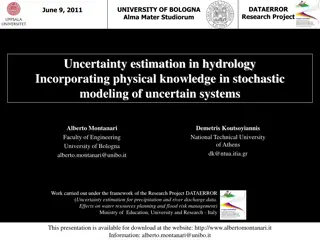The Market for Lemons: Quality Uncertainty and Market Mechanism
This content discusses George A. Akerlof's influential 1970 paper on quality uncertainty in markets, particularly focusing on the automobile market and information asymmetry. It explores the rejection and eventual publication of the paper, its structure, goals, and applications in various economic contexts. Gresham's law is also briefly referenced. The importance of understanding quality differences, uncertainty, and their impact on market dynamics is highlighted.
Download Presentation

Please find below an Image/Link to download the presentation.
The content on the website is provided AS IS for your information and personal use only. It may not be sold, licensed, or shared on other websites without obtaining consent from the author.If you encounter any issues during the download, it is possible that the publisher has removed the file from their server.
You are allowed to download the files provided on this website for personal or commercial use, subject to the condition that they are used lawfully. All files are the property of their respective owners.
The content on the website is provided AS IS for your information and personal use only. It may not be sold, licensed, or shared on other websites without obtaining consent from the author.
E N D
Presentation Transcript
THE MARKET FOR "LEMONS": QUALITY UNCERTAINTY AND THE MARKET MECHANISM GEORGE A. AKERLOF (1970) In The Quarterly Journal of Economics Koshland Professor of Economics at the University of California, Berkeley 2001 Nobel Prize in Economics MIT (Ph.D.) ; Yale University (B.A.)
Some Facts About the Article Both the American Economic Review and The Review of Economic Studies rejected the paper for "triviality" The reviewers for Journal of Political Economy rejected it as incorrect, arguing that if this paper was correct, then no goods could be traded. Only on the fourth attempt did the paper get published in Quarterly Journal of Economics. The paper is one of the most-cited papers in modern economic theory (more than 5,800 citations in academic papers as of July 2009). As of this Sunday: 14,810 citations according to Google Scholar.
Structure of the Article Establish goals Build model Automobile market Applications of Model Insurance Employment of Minorities Costs of dishonesty Credit markets in developing countries Counteracting institutions Conclusion
Goals The paper relates quality and uncertainty Explores interaction of quality differences and uncertainty in explaining important institutions of the labor market. Give structure to the statement: "Business in under-developed countries is difficult Determining the economic costs of dishonesty Applications: insurability; brand names, etc
The Conundrum To explain the large price difference between new cars and those which have just left the showroom
Rise of Information Asymmetry Automobile Market 1. After owning a specific car for a length of time, the car owner can form a good idea of its quality. 2. The owner assigns a new probability to the event that his car is a lemon. 3. This estimate is more accurate than the original estimate. 4. An asymmetry in available information has developed: for the sellers now have more knowledge about the quality of a car than the buyers.
Greshams law Bad money drives out good. If coins containing metal of different value have the same value as legal tender, the coins composed of the cheaper metal will be used for payment, while those made of more expensive metal will be hoarded or exported and thus tend to disappear from circulation.
Model Qd = D (p, u) u = u (p) S=S(p) where Qd = demand, u = average quality; p = price; s= supply And in equilibrium the supply must equal the demand for the given average quality S(p) = D (p, u (p))
Utility Theory Economics concept that although it is impossible to measure the utility derived from a good or service, it is usually possible to rank the alternatives in their order of preference to the consumer. Since this choice is constrained by the price and the income of the consumer, the rational consumer will not spend money on an additional unit of good or service unless its marginal utility is at least equal to or greater than that of a unit of another good or service. Therefore, the price of a good or service is related to its marginal utility and the consumer will rank his or preferences accordingly.
Model Building Where: M is the consumption of goods other than automobiles, xi is the quality of the ith automobile, and n is the number of automobiles Assumptions Both type one traders and maximizers of type two traders are von Neumann-Morgenstern expected utility; Group one has N cars with uniformly distributed quality x, 0<x <2, and group two has no cars; The price of "other goods" M is unity.
Model with Information Asymmetry Demand-Supply for group 1 Demand-Supply for group 2
Insurance It much easier for the applicant to assess the risks involved than the insurance company. As a result the average medical condition of insurance applicants deteriorates as the price level rises Consequently, no insurance sales may take place at any price For males in age group of 55-64 and > 65, noninsured expenditure rises from $66 to $80 while insured expenditure declines from $105 to $70. Adverse selection
Employment of Minorities For race may serve as a good statistic for the applicant's social background, quality of schooling, and general job capabilities. Good quality schooling could serve as a substitute for this statistic. The certifying establishment, however, must be credible; the unreliability of slum schools decreases the economic possibilities of their students.
Cost of Dishonesty Presence of people in the market who are willing to offer inferior goods tends to drive the market out of existence. Dishonest dealings tend to drive honest dealings out of the market. The cost of dishonesty lies not only in the amount by which the purchaser is cheated but also the cost of loss incurred from driving legitimate business out of existence.
Credit Market in Underdeveloped Countries Managing agency system Dominance of these managing agencies by caste Firms establish a reputation for "honest" dealing Monopoly rents Use communal and possibly familial ties to encourage honest dealing within the community Extortionate rates by local moneylender Easy means of enforcing his contract Personal knowledge of the character of the borrower
Counteracting Institutions Institutions arise to counteract the effects of quality uncertainty Guarantees (risk borne by seller) Brand name ( Quality signaling) Chains (standardization ) Licensing /certification (PhD, Nobel prize etc)
Conclusion The difficulty of distinguishing good quality from bad is inherent in the business world Business suffers under such conditions of information asymmetry Institutions emerge to address this uncertainty Informal unwritten guarantees can aid trade
Discussion Questions Why did the article face so much resistance for publication and why has article enjoyed so much success since? The author employs examples and anecdotes to provide the rationale for his arguments. How convinced are you with this approach?
